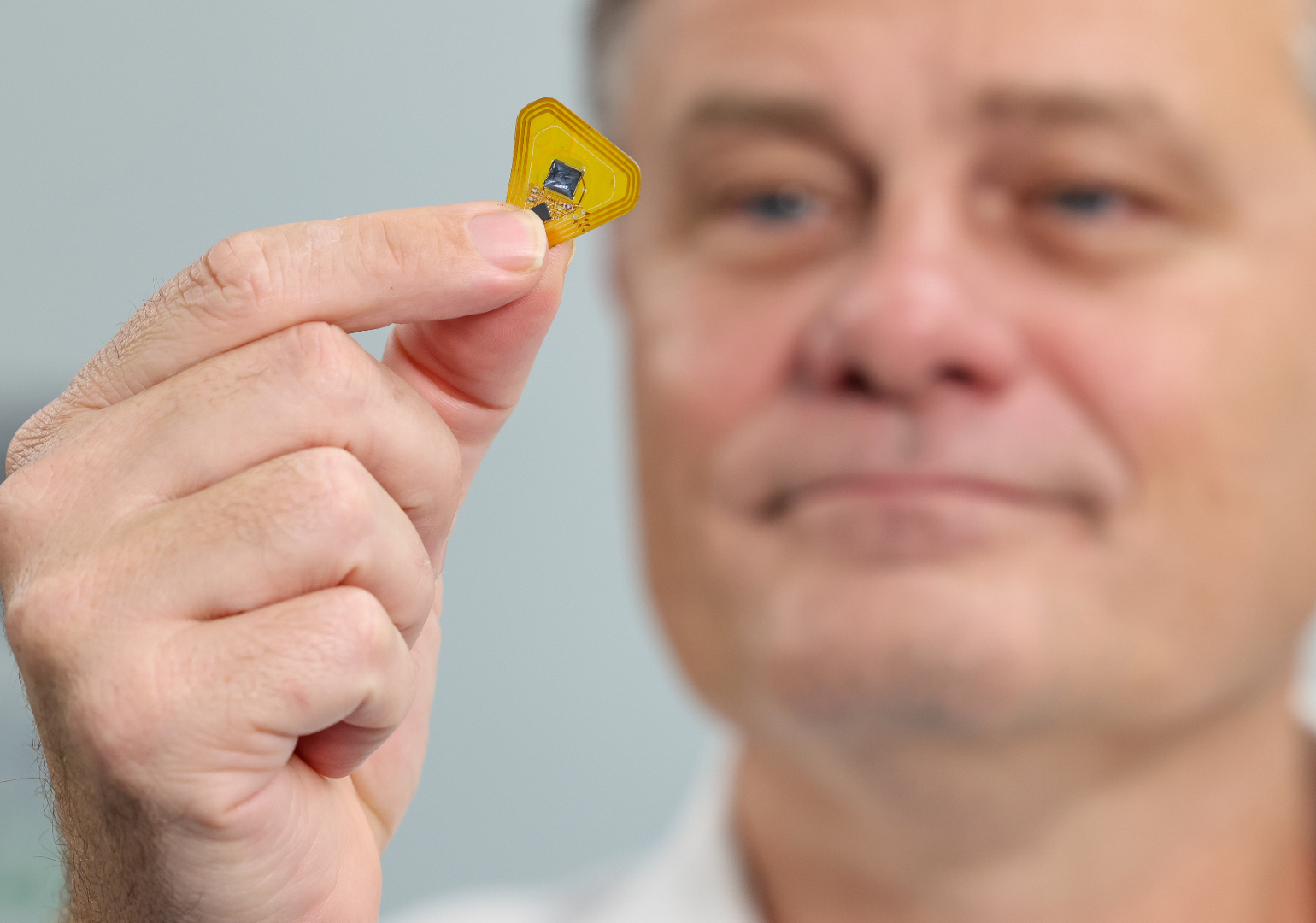A fiery crash taught Formula One driver Mark Webber the importance of hydration. He’s now found a new team of engineers to help prevent it happening again.
Former Australian motor racing champion Mark Webber remembers the moment he learned the hard way about the importance of correct hydration in his line of work.
“I raced at the Monaco Grand Prix … lost basically all cognitive function and ended up crashing,” he recently told a webinar on his new investment venture, WearOptimo.
Elite drivers such as Webber can lose three kg in sweat in the course of one race. It’s in this industry, as well as in military and mining, that WearOptimo is launching the first of its microwearable sensor products.
Founded by biomedical engineer Professor Mark Kendall in 2018, and supported by Australian National University, WearOptimo is a healthtech startup whose key product is the data that it generates from ‘microwearables’ attached to the skin.
“These sensors gain access to unique signals in the skin that today’s surface-based wearables are unable to reach because they’re entirely impeded by the skin’s barrier function,” Kendall told create.
“We have a core tech that reaches just a hair’s width into the skin and gains access to those key signals. In addition to that, it’s [being converted by] our data analytics AI team into key health insights.”
Kendall said that the market for microwearables is $300 billion, and that the hydration product is the easiest to get to market quickly as they develop and trial other products.
“It’s the simplest version of the microwearable, as there’s no need for biological or chemical approaches to measure proteins circulating within the skin,” he said.
“Instead, the hydration microwearable sensors use microelectrodes within the skin’s outer layer called the viable epidermis, which we’ve identified as the layer of the body that’s most sensitive to hydration. From a regulatory point of view, it’s the fastest route to market.”
Hydration may not sound like a critical issue in healthcare, let alone workplace safety, but as Kendall explained, it can be a life and death calculation.
“As we dehydrate, our brain shrinks,” he said. “If you’re just three per cent dehydrated, it has an equivalent effect on your brain function of being over the blood alcohol limit. If you’re driving a 400 t coal hauler, that’s problematic. Alcohol gets managed on a mine, but hydration does not — it’s a poster on the wall asking the colour of your urine.”
In time, Kendall hopes that the product can also help the elderly, with people with dementia often facing dehydration as they forget to properly nourish themselves.
“We’re doing human clinical trials in fit and healthy individuals, [before] moving into elite athletics settings,” he said. “Volunteers in a human physiology lab are put through a tough exercise regimen and a high temperature environmental chamber, where they dehydrate. We test our sensor versus standard approaches and demonstrate the attributes of our sensor.”

Getting over the line
Mark Webber became an investor and strategic partner of WearOptimo thanks to his own experience, but also to champion Australians taking on the world as he did for much of his career.
“At Red Bull Racing, for example, we have 1200 engineers, and I’m the last guy to use the product,” he said. “I want the product to always be better and easy to predict.”
Kendall told create that he deliberately made the decision to launch WearOptimo in Australia — not in Silicon Valley or Geneva.
“I knew that the sum of the parts would be harder when it comes to capital and other issues, but at the same time, what we’re doing is bigger than just our company,” he said. “We’re contributing to the local ecosystem through innovation apprenticeships, [and] many flow-on effects that will come from that.”
He added that WearOptimo has about 32 staff; around half of them are engineers, and more than 15 have PhDs. Half are also women, and the firm consists of approximately 15 different nationalities.
“One of the challenges in Australia is that about two thirds of engineering innovation gets done in universities — in the US, it’s the other way around,” he said.
“There’s a different attitude towards risk appetite in Australia … in terms of how capital gets deployed than those larger funds that are based, for instance, in the US – so there’s more work to be done on that front.”
Kendall, who has invented 150 patents in 25 years, said that the sky’s the limit if Australian innovators continue to receive appropriate support to scale their ideas. He added that competitive grants his firm received from the federal and Queensland governments have allowed them to stay onshore.
Grants have allowed WearOptimo to set up a facility in Brisbane, which will work towards producing around 20 million microwearables per year.
“We concentrated on areas where time matters, addressing major health matters that make the difference between life and death,” Kendall said.